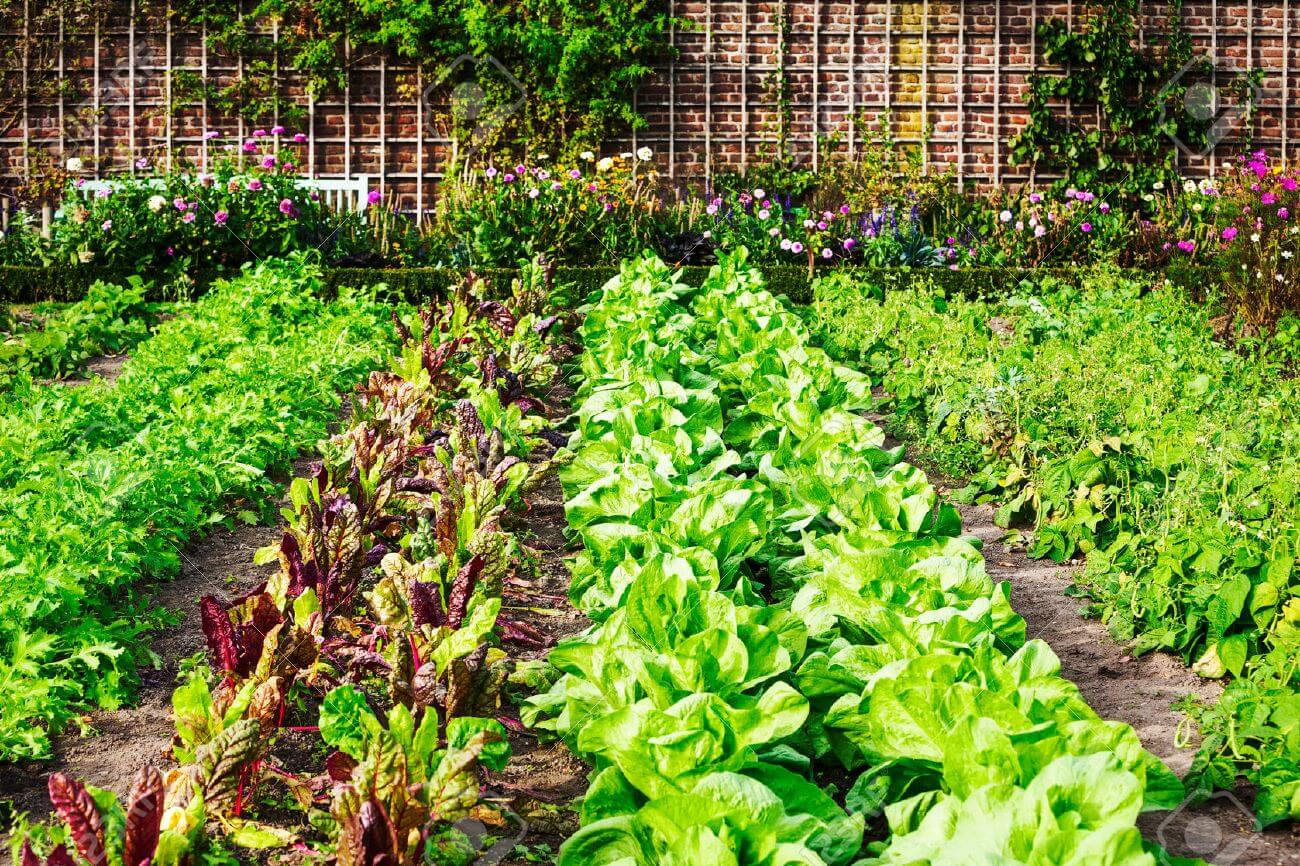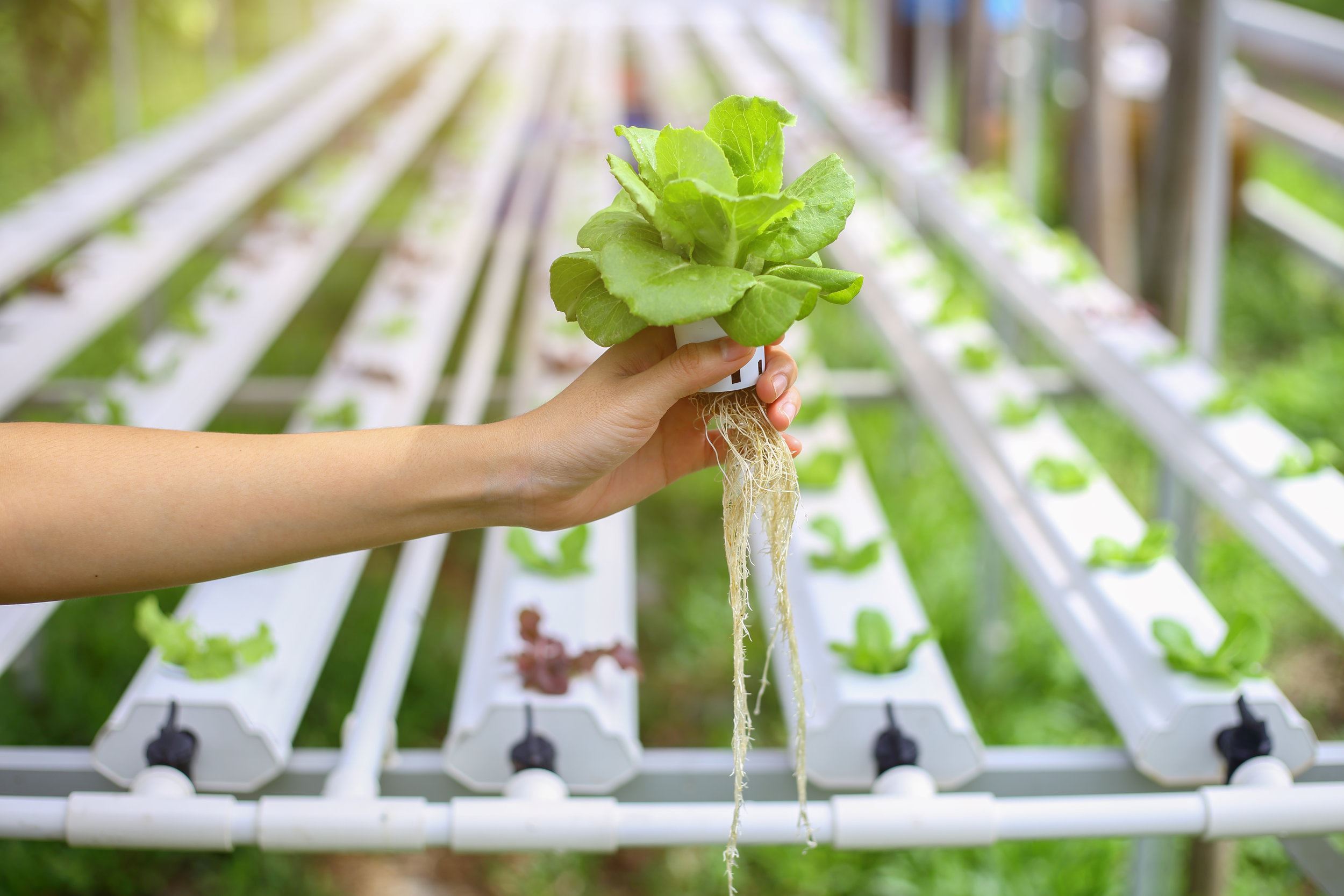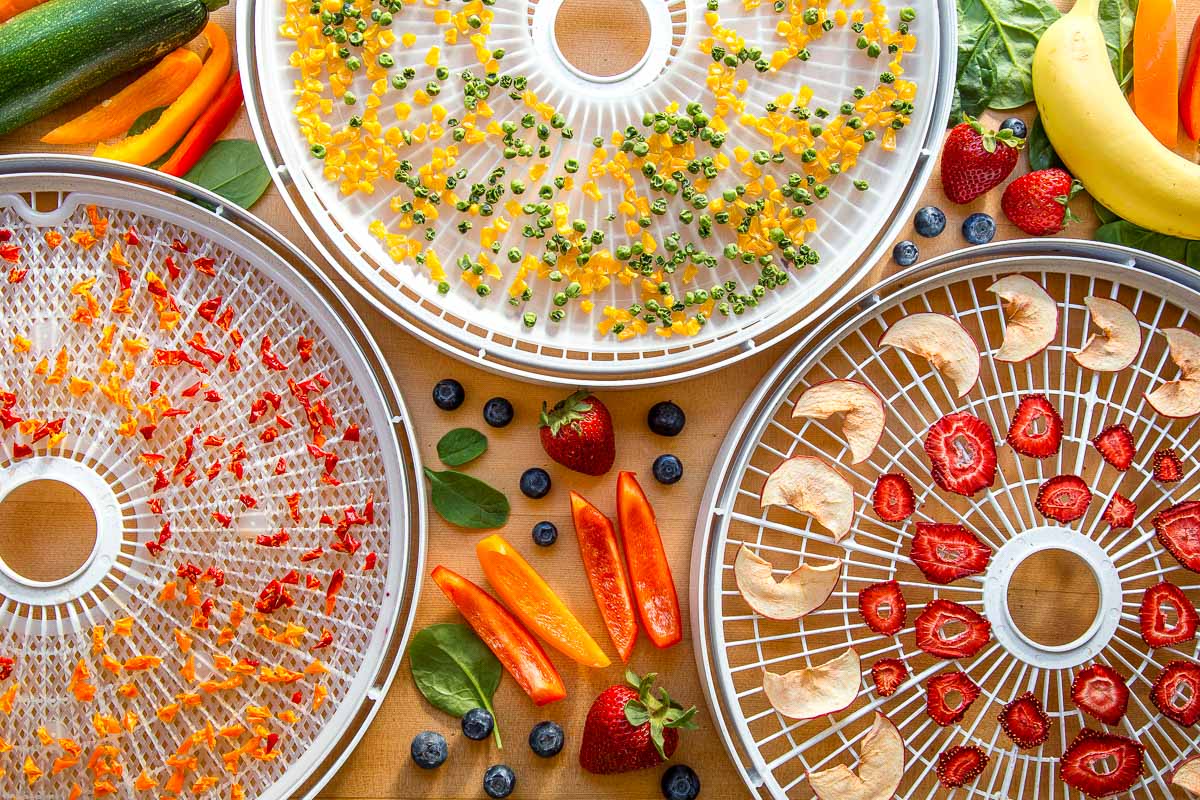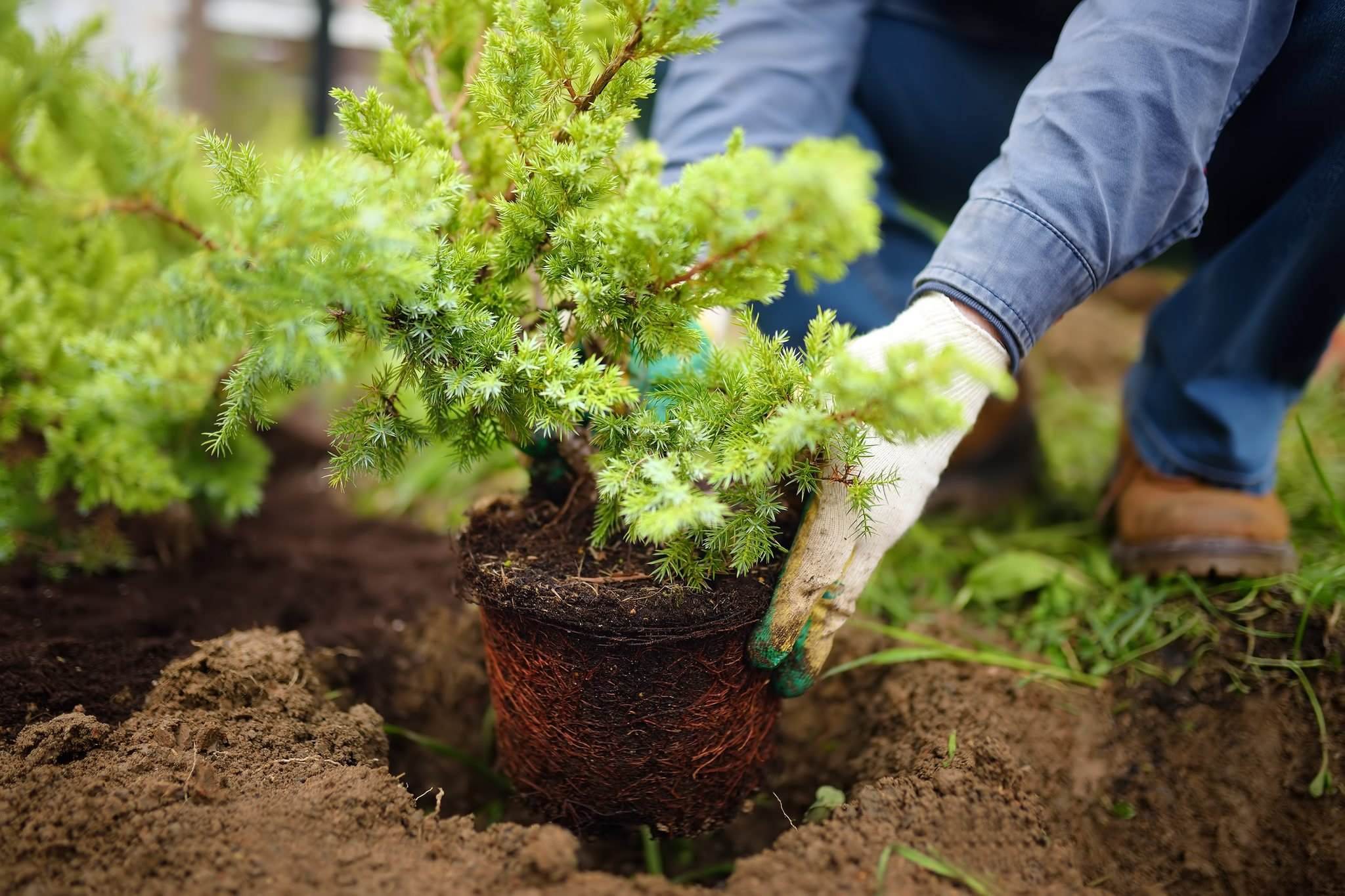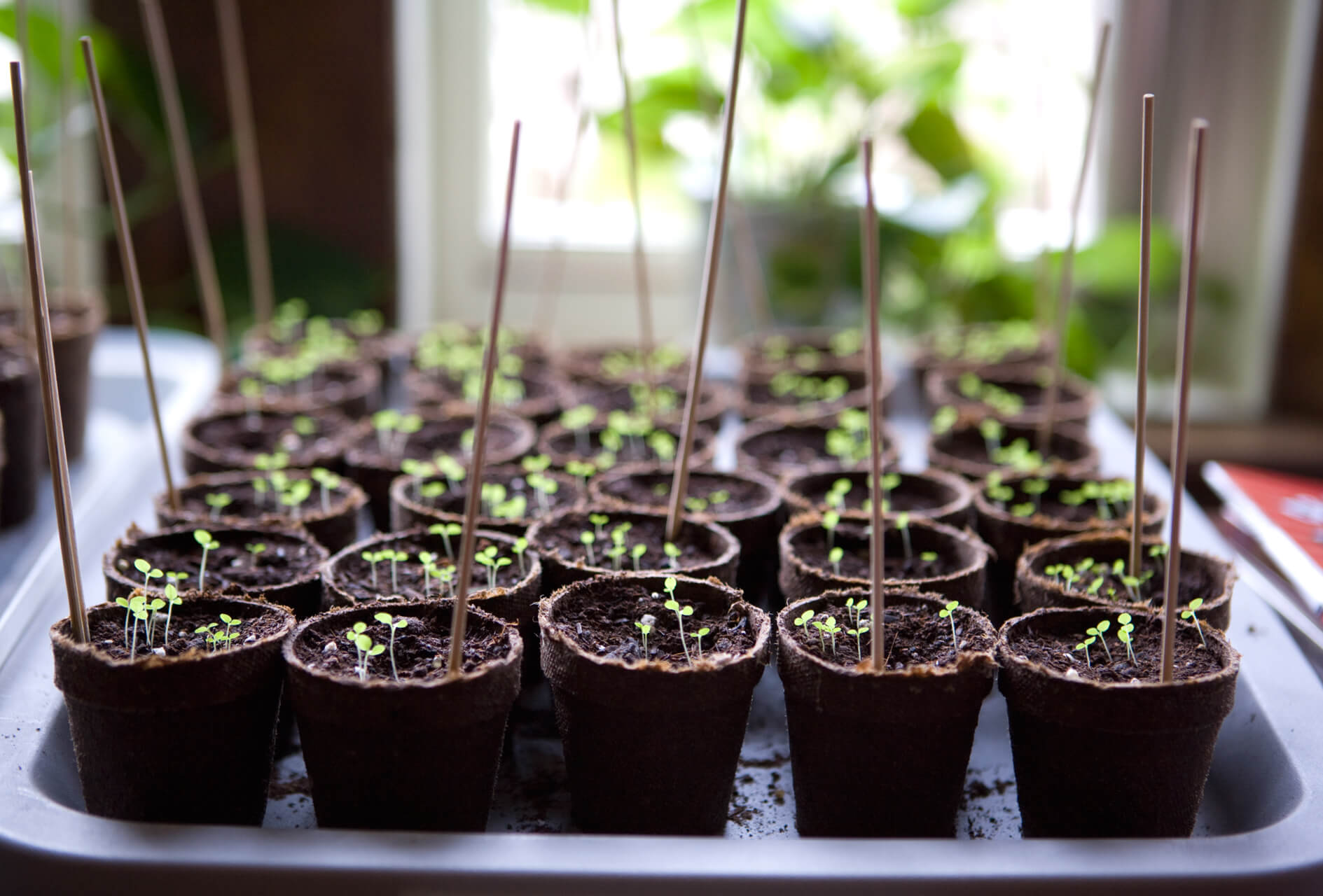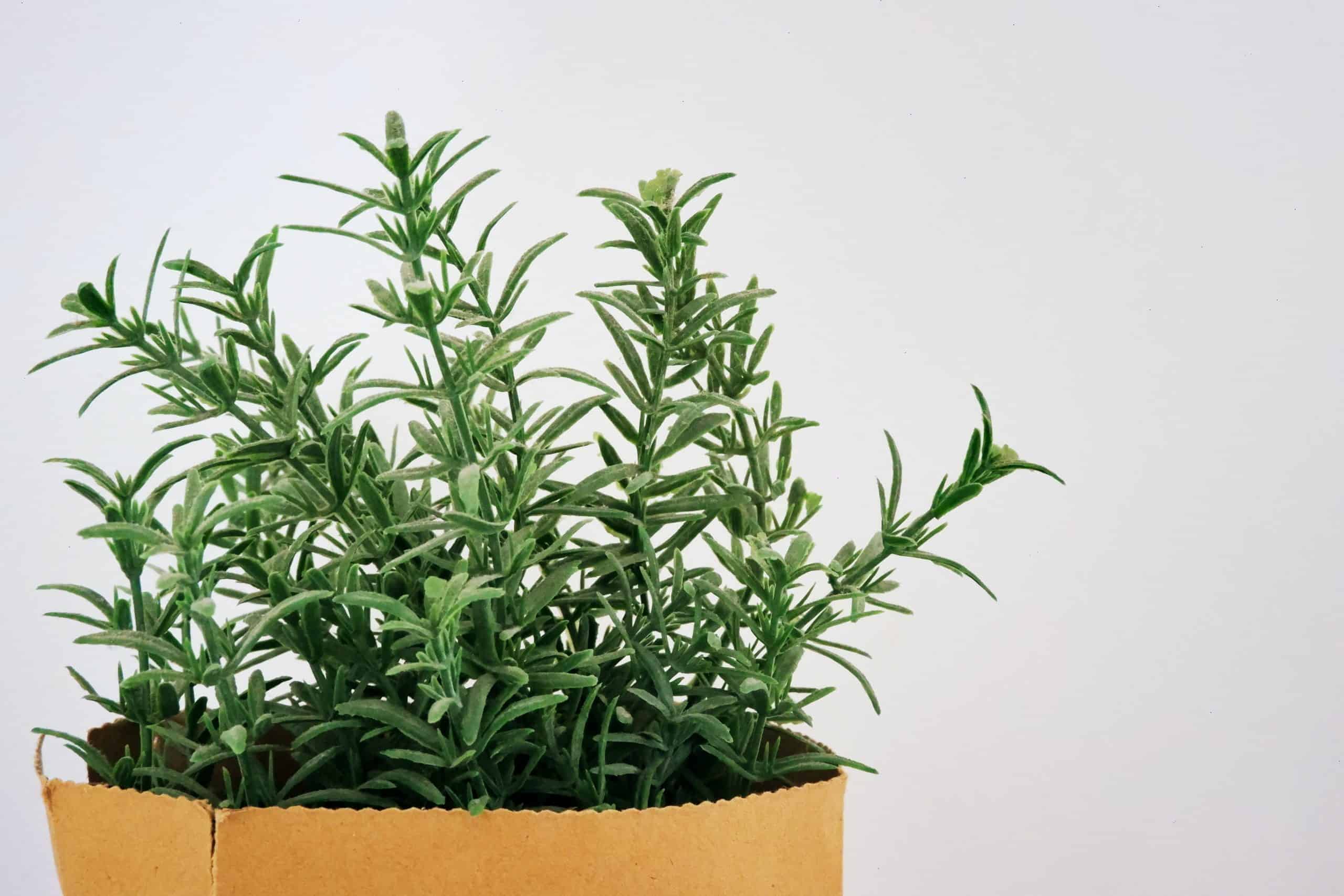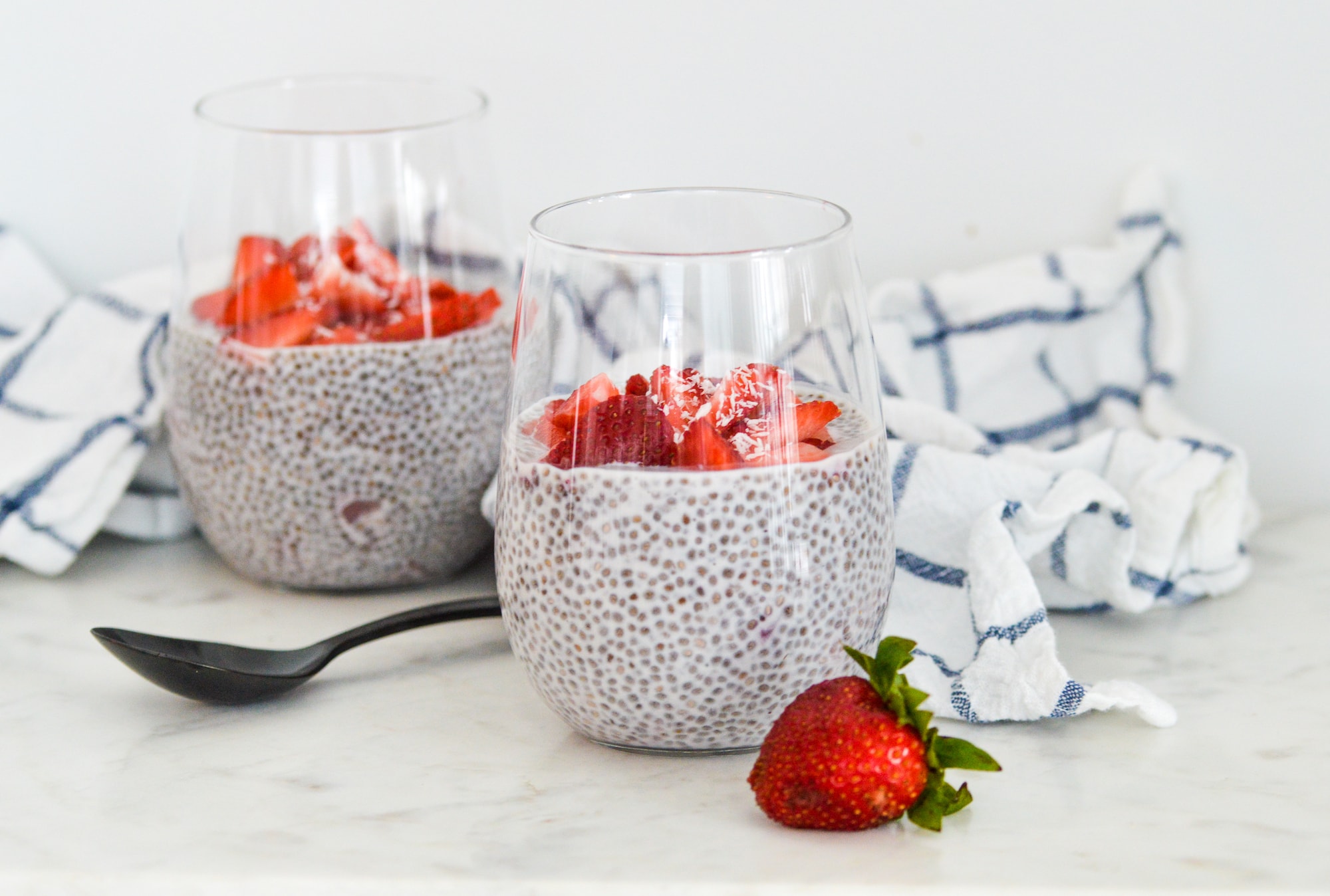Home>Gardening Techniques>Seasonal Gardening>What Can I Start Planting In February


Seasonal Gardening
What Can I Start Planting In February
Modified: January 22, 2024
Start your seasonal gardening journey in February with our helpful guide on what to plant now. Discover the best plants for this time of year and get your garden blooming.
(Many of the links in this article redirect to a specific reviewed product. Your purchase of these products through affiliate links helps to generate commission for Chicagolandgardening.com, at no extra cost. Learn more)
Table of Contents
Introduction
Welcome to the exciting world of seasonal gardening! As February unfolds, nature begins to awaken from its winter slumber, presenting us with the perfect opportunity to start planting and preparing our gardens for the upcoming growing season. This is a time of renewal and growth, as we sow the seeds of anticipation for the bountiful harvests that lie ahead.
Planting in February offers numerous benefits for both seasoned gardeners and those just starting their green-thumb journey. The cool temperatures and moist soil create optimal conditions for seed germination and root development. Starting early allows plants to establish strong root systems before the heat of summer arrives, resulting in healthier and more productive plants.
February planting also gives you a head start on the growing season. By taking advantage of this window of opportunity, you’re able to extend your harvest and enjoy fresh produce, aromatic herbs, and beautiful flowers earlier than those who wait until spring.
However, successful gardening in February requires careful planning and preparation. It’s essential to select cold-tolerant plants that can withstand the remaining chilly days and potential frost. Understanding when and how to start seeds indoors and knowing the ideal time to transplant outdoors are crucial pieces of knowledge.
In this article, we’ll explore a variety of plants that thrive when planted in February. From cold-tolerant vegetables to herbs, flowers, and even fruit trees, we’ll provide you with a comprehensive guide to help you make the most of this early planting season. Whether you have a small balcony garden or a sprawling backyard, there’s something for everyone to grow and enjoy in February.
So grab your gardening gloves, prepare your soil, and let’s dive into the wonderful world of February gardening!
Benefits of Planting in February
Planting in February offers a range of benefits that can significantly enhance your gardening experience and yield impressive results. Let’s take a closer look at why this early start in the growing season is so advantageous:
- Extended Harvest: By planting in February, you can enjoy an extended harvest season. Starting early allows crops to mature before the intense heat of summer, giving you an abundant supply of fresh produce for a longer period.
- Strong Root Development: Cool temperatures and moist soil in February provide optimal conditions for seed germination and root development. The cooler weather allows roots to establish themselves deeply, resulting in stronger and healthier plants overall.
- Beat the Spring Rush: Planting in February allows you to get a head start before the rush of gardeners begins in spring. This gives you a wider variety of seeds and seedlings to choose from, as well as increased availability of gardening supplies.
- Less Pests and Diseases: Many pests and diseases are less active during the cooler months, reducing the risk of infestations or plant diseases affecting your garden. This is especially beneficial for organic gardeners who prefer to minimize the use of pesticides.
- Enjoy Early Harvests: Certain crops, like cold-tolerant vegetables and early flowering plants, can be harvested earlier when planted in February. This means you can start enjoying delicious, homegrown produce and beautiful blooms before traditional gardeners have even begun planting.
Overall, planting in February provides an array of advantages that can make a significant difference in your gardening endeavors. It allows for an extended harvest, promotes strong plant development, and helps you beat the rush of spring gardeners. Furthermore, it reduces the risk of pests and diseases and offers the joy of early harvests. So, seize the opportunity and get started on your February planting to reap these benefits and create a flourishing garden.
Planning and Preparation
Before diving into your February planting, taking the time to plan and prepare will set the stage for a successful gardening season. Here are some essential steps to follow:
- Assess Your Space: Determine the available space in your garden and consider factors such as sunlight, soil quality, and drainage. This will help you choose plants that are suitable for your specific growing conditions.
- Develop a Planting Schedule: Create a planting schedule based on the specific requirements of the plants you wish to grow. Consider the frost dates for your region and plan accordingly, starting seeds indoors or directly sowing them outdoors when appropriate.
- Prepare the Soil: Ensure that your soil is well-prepared and enriched with organic matter before planting. Clear out any weeds or debris and amend the soil with compost or aged manure to promote nutrient-rich soil for your plants.
- Start Seeds Indoors: Many plants benefit from an early start indoors. Start your seeds in seed trays or pots, providing them with the appropriate lighting and temperature conditions. This allows for better control of germination and early growth, giving your plants a head start before transplanting them outdoors.
- Transplant Carefully: When it’s time to transplant seedlings outdoors, take care to harden them off gradually. This involves gradually exposing them to outdoor conditions over a period of time to acclimate them to the change in weather and reduce the risk of transplant shock.
- Protect from Frost: Keep an eye on the weather forecast and be prepared to protect your plants if frost is expected. Use techniques such as row covers, frost blankets, or even simple homemade structures to shield your plants from freezing temperatures.
Planning and preparation are crucial in ensuring a successful planting season in February. Assessing your space, developing a planting schedule, and preparing the soil will set the foundation for healthy plants. Starting seeds indoors, careful transplantation, and protecting from frost help maximize the growth and survival of your plants. By following these steps, you’ll be well-equipped to embark on your February gardening journey!
Cold-Tolerant Vegetables
February is the perfect time to plant cold-tolerant vegetables that can withstand the lingering chill of winter. These hardy vegetables thrive in cooler temperatures and can be enjoyed as early as spring. Here are some popular options to consider:
- Lettuce: Lettuce is an excellent choice for February planting as it grows well in cooler temperatures. Varieties such as romaine, spinach, and mesclun mix can be sown directly into the garden or started indoors and transplanted outdoors.
- Kale: Kale is known for its hardiness and ability to withstand frost. Planting varieties like ‘Red Russian’ or ‘Winterbor’ in February will provide you with a bountiful harvest of nutritious greens throughout the spring.
- Broccoli: Broccoli is a cold-tolerant vegetable that can be started from seed indoors in February and transplanted outdoors when the weather permits. The cool temperatures promote the growth of large, flavorful heads.
- Carrots: Carrots can be sown directly into the garden in February. The cool soil conditions contribute to sweeter and crispier roots. Choose varieties like ‘Danvers’ or ‘Nantes’ for a successful carrot crop.
- Radishes: Radishes are fast-growing vegetables that thrive in cooler temperatures. Sow them directly into the garden in February for a quick harvest of crunchy and peppery roots. Varieties like ‘French Breakfast’ and ‘Cherry Belle’ are popular choices.
Other cold-tolerant vegetables to consider planting in February include Brussels sprouts, cauliflower, turnips, and Swiss chard. These vegetables will not only withstand the remaining cold weather but also provide you with an early harvest that can be enjoyed in your spring salads and stir-fries.
Remember to follow proper spacing and watering techniques for each vegetable variety and take precautions to protect your plants from frost if necessary. With these cold-tolerant vegetables, you can start your gardening season off on a delicious and nutritious note!
Herbs and Greens
February is an excellent time to start growing herbs and greens in your garden. These flavorful additions to your meals not only provide a fresh burst of taste but also offer a range of health benefits. Here are some herbs and greens that can be planted in February:
- Parsley: Parsley is a versatile herb that can be grown indoors or outdoors. Planting it in February allows you to enjoy its fresh leaves throughout spring and summer. It thrives in cooler temperatures and can be used to enhance the flavor of a variety of dishes.
- Chives: Chives are cold-tolerant herbs that can be grown in February. These perennial herbs add a mild onion flavor to dishes and are a great addition to soups, salads, and omelets. Plant the seeds in well-draining soil for a bountiful harvest.
- Spinach: Spinach is a nutrient-rich leafy green that thrives in cooler temperatures. Planting it in February allows for an early harvest of tender leaves. Whether you choose to sow the seeds directly in the garden or start them indoors, spinach is a must-have for any salad lover.
- Arugula: Arugula, also known as rocket, adds a peppery kick to salads and sandwiches. It is a fast-growing green that can be sown directly into the garden or started indoors in February. Harvest the tender leaves as needed for a burst of flavor.
- Mint: Mint is a herb that adds a refreshing flavor to beverages and desserts. It can be grown in containers or planted directly in the garden in February. Mint is a hardy plant that continuously spreads, so be sure to give it ample space to thrive.
Other herbs and greens suitable for planting in February include dill, cilantro, lettuce, and Swiss chard. These plants not only enhance the taste of your meals but also provide numerous nutrients and culinary versatility.
Remember to provide adequate water and sunlight for your herbs and greens, and harvest them regularly to promote continuous growth. Whether you’re an aspiring chef or a lover of fresh flavors, planting herbs and greens in February will bring a delightful variety of tastes to your table.
Early Flowering Plants
February is not just about vegetables and greens – it’s also a great time to bring vibrant colors and fragrant blooms to your garden. By planting early flowering plants, you can create a stunning display of colors and attract pollinators to your outdoor space. Here are some popular options to consider:
- Pansies: Pansies are known for their cheerful faces and wide range of colors. These cold-tolerant flowers can be planted in February to add a burst of color to your garden beds, containers, or hanging baskets. They are relatively low maintenance and can even withstand light frosts.
- Snapdragons: Snapdragons are lovely, tall flowers that bring vertical interest to your garden. They are available in a variety of vibrant colors and can be planted in February for early spring blooms. These hardy plants thrive in cool temperatures and add a delightful touch to borders and flower arrangements.
- Violas: Violas, also known as Johnny-Jump-Ups, are beautiful and dainty flowers that can be planted in February. They produce a profusion of small, colorful blooms and offer a delightful fragrance. Plant them in containers, window boxes, or directly in the garden for a charming display.
- Dianthus: Dianthus, or Carnations, are a lovely addition to any garden with their delicate petals and sweet fragrance. These flowers can be planted in February for early spring blooms. They come in a range of colors and are excellent for beds, borders, or cut flower arrangements.
- Primroses: Primroses are a popular choice for early spring color. They are available in various shades of pink, purple, and yellow, adding a vibrant touch to gardens and containers. Plant them in February for blooms that will last well into spring.
Other common early flowering plants to consider include daffodils, tulips, hyacinths, and early blooming varieties of roses. These flowers bring beauty and a sense of renewal to your garden, signaling the arrival of spring.
Remember to provide adequate water and sunlight for your early flowering plants and deadhead spent blooms to promote continuous blooming. With these colorful additions, your garden will be a springtime haven in February.
Perennial Flowers and Herbs
In addition to annuals and early flowering plants, February is also a great time to start planting perennial flowers and herbs. Perennials are plants that come back year after year, adding beauty and fragrance to your garden. Here are some popular perennial options to consider:
- Lavender: Lavender is a beloved perennial herb known for its fragrant blooms and calming properties. Planting lavender in February allows it to establish roots before the warmer months. With its beautiful purple flowers and aromatic foliage, it’s a wonderful addition to any garden or herb bed.
- Daylilies: Daylilies are hardy, low-maintenance perennials that produce stunning blooms in various colors. Planting them in February gives them a head start for summer flowering. Daylilies are known for their long-lasting flowers and impressive tolerance to different growing conditions.
- Salvia: Salvia, also known as sage, is a versatile perennial herb that comes in many varieties. It features attractive foliage and produces stunning spikes of flowers in shades of blue, purple, red, or white. Planting salvia in February ensures a vibrant display in the summer months.
- Purple Coneflower: Purple coneflower, or Echinacea, is a native perennial known for its distinctive daisy-like flowers and medicinal properties. Planting it in February allows it to establish deep roots and ensures abundant blooms in the summer. This hardy plant attracts pollinators and adds a burst of color to your garden.
- Yarrow: Yarrow is a tough and versatile perennial that produces clusters of small, delicate flowers in shades of white, pink, or yellow. Planting it in February allows it to establish a strong root system. Yarrow is known for its tolerance to various soil conditions and its ability to attract beneficial insects.
Other perennial flowers and herbs suitable for planting in February include bee balm, coreopsis, Russian sage, perennial geraniums, and lamb’s ear. These plants provide long-lasting beauty, attract pollinators, and require less maintenance compared to annuals.
When planting perennial flowers and herbs, consider their specific growing requirements, including sunlight, soil type, and moisture needs. With proper care, these perennials will grace your garden for years to come, bringing joy and color to each new growing season.
Fruit Trees and Bushes
February is an ideal time to start planting fruit trees and bushes in your garden, setting the stage for future harvests of delicious and nutritious fruits. Whether you have a large backyard or a small patio, there are options available to suit different spaces. Here are some popular fruit trees and bushes to consider planting in February:
- Apple Trees: Apple trees are a classic choice for home gardeners. They come in a variety of sizes and types, allowing you to select the perfect apple tree for your space. Planting apple trees in February gives them time to establish strong root systems before the growing season begins.
- Blueberry Bushes: Blueberries are not only tasty but also packed with antioxidants. Planting blueberry bushes in February allows them to establish deep roots and bear fruits in the summer. Look for varieties suited to your climate and ensure proper soil acidity for optimal growth.
- Peach Trees: If you live in a warmer climate, consider planting peach trees in February. These sun-loving trees provide a bounty of juicy and sweet fruits. Ensure that you choose a peach tree variety suitable for your region and provide them with ample sunlight and well-draining soil.
- Strawberry Plants: Strawberry plants can be easily grown in containers or garden beds. Planting strawberries in February allows them to establish strong roots and produce an early harvest of sweet, juicy berries. Look for everbearing or day-neutral varieties for continuous fruiting throughout the growing season.
- Raspberry Canes: Raspberries are a delicious addition to any garden. Planting raspberry canes in February allows them to establish themselves and produce a bountiful crop of berries. Ensure proper support for the canes, such as trellises or stakes, and consider the specific growing requirements of different raspberry varieties.
When planting fruit trees and bushes, ensure you provide them with the appropriate growing conditions, including sunlight requirements, soil type, and spacing. Regular pruning and proper care will help promote healthy growth and maximize fruit production in the years to come.
With fruit trees and bushes, you can create your own mini orchard and enjoy the satisfaction of harvesting homegrown fruits. Whether it’s apples, blueberries, peaches, strawberries, or raspberries, planting these fruit-bearing plants in February will set you on a path to fruitful abundance.
Tips for Successful Planting in February
Planting in February requires a slightly different approach compared to other times of the year. To ensure a successful gardening experience, here are some helpful tips to keep in mind:
- Choose Cold-Tolerant Varieties: Opt for plants that can withstand cooler temperatures and potential frosts. Select cold-tolerant vegetable varieties, hardy herbs, and early flowering plants that are suited for your specific climate zone and weather conditions in February.
- Timing is Everything: Pay attention to your region’s frost dates and local weather patterns. Start seeds indoors or direct sow outdoors based on the ideal timing suggested for each plant. Be prepared to protect tender seedlings from unexpected frost by covering them with row covers or cloths.
- Prepare the Soil: Prior to planting, ensure that your soil is well-prepared. Remove any weeds or debris and amend the soil with compost or organic matter to improve its fertility and drainage. This will provide a healthy environment for your plants’ root development.
- Provide Adequate Water: Even though February tends to have more moisture in the air, it’s still important to provide consistent and adequate water to newly planted seeds and transplants. Monitor the moisture levels in the soil and adjust watering frequency accordingly.
- Protect from Frost: Keep an eye on the weather forecast and be prepared to protect your plants from frost. Cover them with frost blankets, cloths, or even homemade structures like plastic bottles or milk jugs to shield them from freezing temperatures during chilly nights.
- Monitor Plant Growth: Regularly monitor the growth and health of your plants. Look for signs of pests, diseases, or nutrient deficiencies and take appropriate measures to address them. Remove any damaged or diseased plants promptly to prevent the spread of problems to healthy plants.
- Mulch and Weed: Apply a layer of mulch around your plants to help retain soil moisture, regulate temperature, and suppress weed growth. Regularly remove any weeds that compete for nutrients and space with your desired plants, ensuring they have ample room to thrive.
- Practice Crop Rotation: If you’re planting vegetables, practice crop rotation to minimize pest and disease issues. Avoid planting crops from the same family in the same location as the previous season. This helps break the life cycles of pests and prevents the depletion of soil nutrients.
- Keep Learning and Experimenting: Gardening is a constant learning process. Take note of what works well for you and your specific growing conditions in February. Keep experimenting with different plant varieties, techniques, and gardening methods to continually improve your skills and achieve better results.
By following these tips, you’ll be well on your way to a successful planting season in February. With proper planning, preparation, and care, your garden will thrive and reward you with an abundance of vegetables, herbs, flowers, and fruits.
Conclusion
As February unfolds, the world of seasonal gardening comes alive, offering a wealth of opportunities to plant, nurture, and grow. Whether you have a sprawling backyard or a small balcony garden, this early planting season holds immense potential for a bountiful and beautiful harvest.
By taking advantage of the benefits of planting in February, such as extended harvests and strong root development, you can enjoy the rewards of your labor sooner and with greater success. Whether you choose to plant cold-tolerant vegetables, fragrant herbs, early flowering plants, or fruit trees and bushes, there are endless possibilities to explore.
However, successful gardening in February requires careful planning and preparation. Assessing your space, developing a planting schedule, and preparing the soil will set the stage for healthy and vigorous plants. Start seeds indoors, transplant seedlings with care, and protect your plants from unexpected frost to ensure their survival and growth.
Remember to embrace the joy of February planting, where you can witness the magic of nature’s renewal firsthand. Experiment with different varieties, learn from your experiences, and adapt your techniques along the way. Gardening is a journey of discovery, and February is the perfect time to embark on it.
So, don your gardening gloves, grab your tools, and let nature guide you. With patience, passion, and a touch of creativity, your February garden will flourish, rewarding you with an array of fresh produce, aromatic herbs, colorful blooms, and the satisfaction of growing your own food and creating a beautiful outdoor space.
Get ready to plant, nurture, and grow in the captivating world of February gardening!

